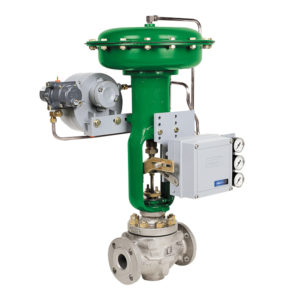December 21, 2020
This checklist will help you troubleshoot common issues to avoid unnecessary downtime.
Troubleshooting valve issues
- We are available for technical phone support.
- Process conditions can affect valves in different ways – please have any information available.
- Take pictures or videos of any issues to help us understand your concerns.
- Make note of any specific symptoms or problems – what is it doing or not doing?
- Is it inline or flanged up in a test fixture?
- Are these issues during startup and commissioning?
- Any changes in fail action or mounting?
- Was it installed and functioning?
- How recently was any preventive maintenance performed?
- How was the problem discovered?
Common issues and what they can mean:
- Valve won’t close – take a look for:
- Debris in the line.
- Travel issues — does the valve stroke the full range of its expected travel?
- Valve is leaking:
- Quick check on installation and commissioning:
- Control valves have allowable leakage rates – is it leaking beyond the expected calculated leak rate?
- Is it inline or otherwise flanged up for testing and what pressure is being applied?
- Be sure to verify nothing has loosened from possible vibration during shipment – bolts are tight, no apparent damage or misalignment, etc.
- Consider from where:
- If leaking OUT of the valve, it could be a sealing issue:
- Possibly a packing leak – could need packing maintenance or replacement due to normal wear.
- Possibly around gaskets, flanged sealing surfaces, or due to a hole in the body.
- If leaking THROUGH the valve:
- Possibly just normal wear and needs maintenance or repair.
- Possibly an issue across the plug and/or seat – extended or continued use may cause damage.
- Possibly sizing concerns (see our article: Is Your Valve Missized? for more information) – be sure to supply process conditions for an engineered product, and if based on repeat or viable construction, then current process conditions should be assessed.
- If leaking OUT of the valve, it could be a sealing issue:
- Quick check on installation and commissioning:
Valve tips by type:
- Vee-ball
- Orientation of the valve to the actuator – rotation of the actuator to the valve body can damage seats, seals, etc. if not performed properly.
- Butterfly
- Be careful with the seat rings when installing – these can be held in by various methods. Those held in by friction are not connected, so be sure to hold parts in place while installing.
- 9500’s have a Nitrile or PTFE gasket that acts as packing but does not have standard packing. Overtightening can damage the gasket and create or increase issues with any leak concerns. One temporary workaround can be to add a piece of rope packing if process conditions allow.
- Sliding Stem
- Fail position for 657/667 depends on actuator selected.
- Changes in packing material can affect bench set.
- Packing maintenance is critical at periodic intervals after installation, especially if there are high temps.
Sales and product support: 800-325-4808


